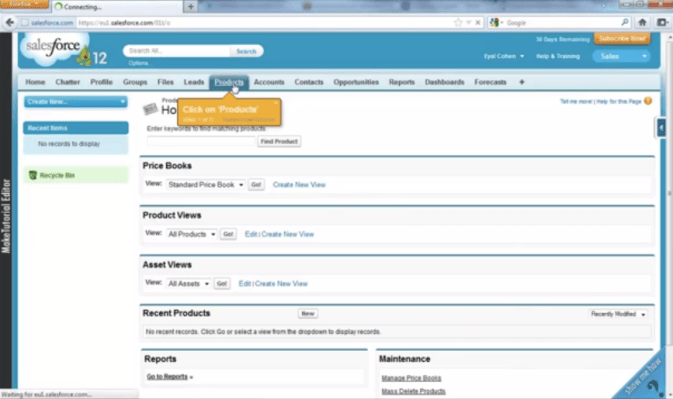WalkMe, a platform that provides visual cues for website visitors so that users can navigate around them more easily, has raised $11 million in funding to expand its business and building out its customer base among enterprises.
The funding was led by Scale Venture Partners, with participation also from existing investors Mangrove Capital Partners, Giza Venture Capital and Gemini Israel Ventures. As part of the investment, Rory O’Driscoll, Partner at Scale Venture Partners, will join theWalkMe Board. WalkMe has to date raised $17.5 million.
When WalkMe — founded in Israel, relocated now to San Francisco — first launched in 2012, and even as it picked up more steam a year later, it was positioned as a service mainly aimed at consumer sites. WalkMe’s CEO Dan Adika says the shift to focusing on business users came somewhat organically.
“As we were talking with customers, it became evident that the markets where WalkMe brings a lot of business value to is with enterprise companies and large organizations, in a wide variety of industries, specifically for training employees, helping business partners through the partner portal, and increasing the ease of adoption of new software or major software upgrades,” he told me.
There is also an issue of cost savings. “In a business enterprise environment, even simple applications can be very costly when you factor in errors, training and the productivity loss that is often a result,” he said.
The move to enterprise users has also seen WalkMe expand its product offering to fit more of the needs of the new target audience. They include engagement optimization, contextual promotions, advanced cross-selling capabilities, and advanced analytics.
So far, the results have been encouraging. In the past 12 months, WalkMe says it has seen a five-fold increase in revenues since starting to target enterprises, with customers including Adobe, Amazon Web Services, Cisco, Citrix, Stanley Black&Decker, US Foods, Bank of Montreal and Kimberly-Clark.
He says that currently, about 60% of WalkMe’s business is larger customer-facing websites (such as banks & financial services, SaaS vendors and Telcos), while 40% are enterprises that use WalkMe for internal training on business software or operations streamlining.
Going forward, I asked Dan if WalkMe might ever look to expand the kinds of services that it offers to guide users on sites — in a world where PCs (and physical keyboards) are becoming less common, would WalkMe ever, for example, integrate voice response?
No is the answer for now. “We actually feel that this is less practical because we have to aim at the largest common core of people,” says Adika. “The beauty in our walk through technology is that the idea is to use it while you work. Working in a more public space, or in case you don’t have speakers, or trying to concentrate on a task while a voice is telling you instructions, could actually be disruptive to the work flow.”
What we may see more immediately, he says, are more nuanced ways of presenting cues to employees or other site visitors based on individual demands.
